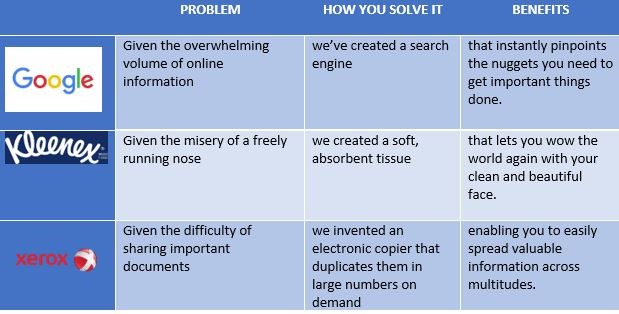Stuck on messaging? Start by asking, ‘Who cares?’
If content creators are laser focused on value for the end consumer, they are less likely to suffer writer’s block.
Messaging can be tough, and it’s easy to get stuck. Whether you’re working on a company introduction, product launch, or messaging revamp, I suggest you can blow through writer’s block by writing these eight letters across the whiteboard: WHO CARES?
The answer, very often, is no one outside that room.
Consumers and business buyers are busy. Unless you’re one of the very hottest brands, they don’t automatically care about your business, your new product or your life. They’re not waiting for you to settle on just the right adjectives for your offering. You need to help them care. And you can.
Asking who cares is the key. Although marketers might understand intellectually that no one cares, they too often get so involved with their own projects they lose perspective. The CEO and the board care a lot, which helps a marketer imagine that everyone outside the company is yearning to hear from him or her. Yet, when marketers fully accept that that no one in this busy and cacophonous world actually does care, they are on their way toward relevance.
So, how do you help your target audience care?
You make yourself matter to them by concisely:
- Invoking a compelling problem.
- Explaining how you solve it.
- Describing what’s in it for them.
Bring it together in an elevator statement—the whole argument for the existence of your company, product or initiative in one, or maybe two digestible sentences.
This elevator statement will be something you can memorize and rattle off every time you address someone new or create new content. Ideally, everything else, including all your marketing materials, will flow out of the statement’s organizing pillars.
1. What problem do you solve?
Although many marketers recoil from any whiff of negativity, there must be a problem, big or small, explicit or implicit, to solve before anyone can care. That’s what people spend money to do, solve problems like hunger (their own or the world’s), thirst, boredom, discomfort, danger, disease, ignorance, curiosity, self-doubt, waste, poor performance, inefficiency, excess costs, low profits.
Great brands address discrete problems, and the greatest brands address problems so deftly that their brands become a byword for the problem they solve (e.g., Google, Kleenex and Xerox). They became synonyms for solving the problems of finding elusive stuff on the internet, tidying up your runny nose, and sharing valuable documents prior to the advent of computer networks.
So, what is the problem you solve? Start there, and people will start to care.
2. How do you solve the problem?
Next, say what you do to solve your given problem in the simplest, crispest, most concise terms. Since audiences start out not caring, it’s very important to make problems and solutions easy for people to understand.
Don’t load up your company description with fifty-dollar words, jargon, abstractions, obfuscations or technical terms. If you’re a car brand, don’t call your product a mobility solution because that term could refer also to canes, smartphones, GIS systems, river kayaks and SpaceX rockets. Say what you are, and don’t confuse.
3. What’s in it for them?
One of the reasons you want to keep your problem statements and descriptions succinct is that you’ll want to squeeze some benefits into your elevator statement. Your prospects, to the extent they care, want to know what’s in it for them. And there’s value in saying it versus just hinting at it.
If you’ve stated a problem and explained how you solve it, it shouldn’t take much work to articulate the benefit of what you do in your elevator statement. Here’s your chance to be a little bold, poetic or aspirational—yet authentic. Here’s the gist (with examples in my words):

Each row constitutes a prototype elevator statement. Start by writing down the concepts; later you can tinker with the words. Try this with your own brand, and see if you can do better than this.
(And how are you different?)
What hasn’t yet been addressed are differentiators—e.g., firsts, bests, and onlys. Differentiation is important, but it matters when you invoke it. In the copier example, we could have dwelled on differentiation by saying we’ve created the world’s first electronic document copier, a machine that duplicates documents far faster and more crisply than the mimeograph, and without the need for any messy carbon paper or typing.
That’s interesting and important, and it should come early in your value proposition. But for an elevator statement, it lacks an aspirational benefit. It’s ultimately your call as to whether you explicitly differentiate in your elevator statement, and whether you need a second sentence to get it done.
Differentiation is powerful, but you need to put this, too, through the “Who Cares?” test. Is your difference concrete, true and meaningful? If you’re selling a new cure for a deadly disease, that’s meaningful. If your widget is impressively high in resolution but no one’s eyes can appreciate the advantage over competitors’ run-of-the-mill versions, that difference is not meaningful. You’re better off focusing on problems, solutions and benefits.
The more meaningful the differentiator, the sooner you want to mention it.
Either way, when you’re getting started on messaging, begin with a problem, articulate the solution, and state the benefits. With those pillars as your guide, you can map out a playbook as detailed and intricate as you like.
If you’re succinct in the elevator (and if there’s enough value there) even in this big, busy world, people will care.
Steve McGrath is senior vice president of content at Brodeur Partners, a Boston-based communications agency committed to deepening clients’ relevance.






